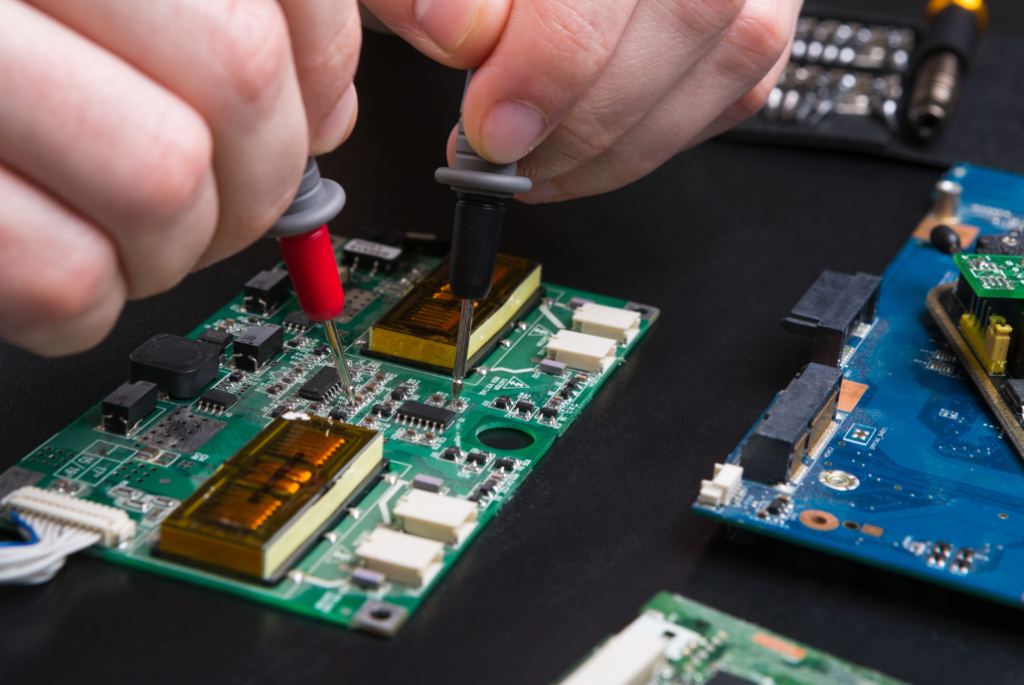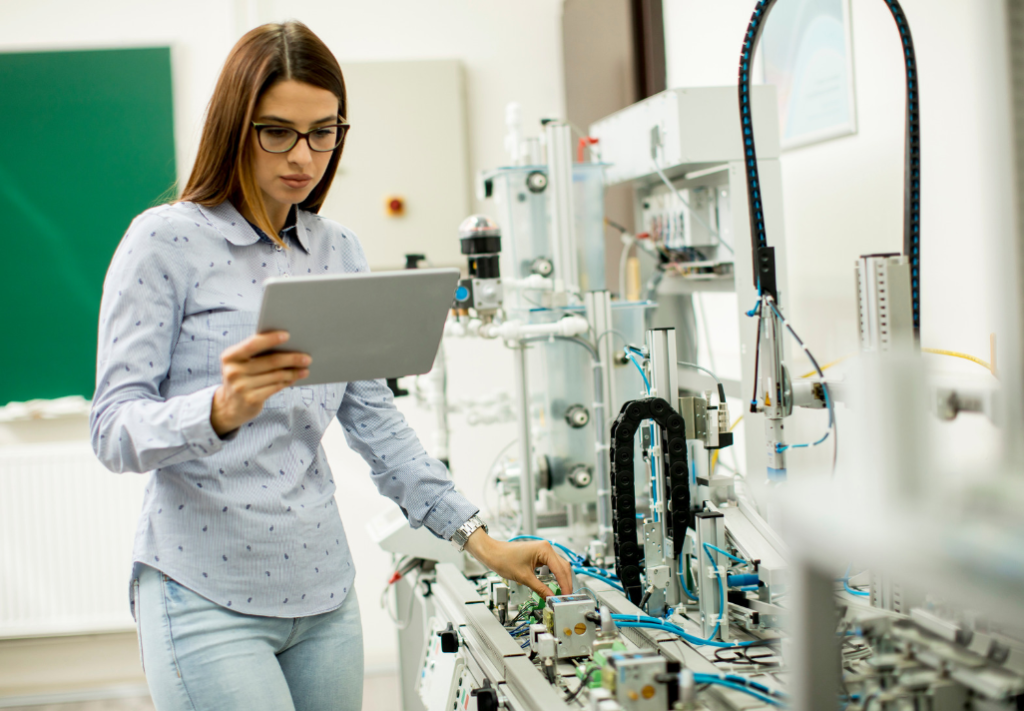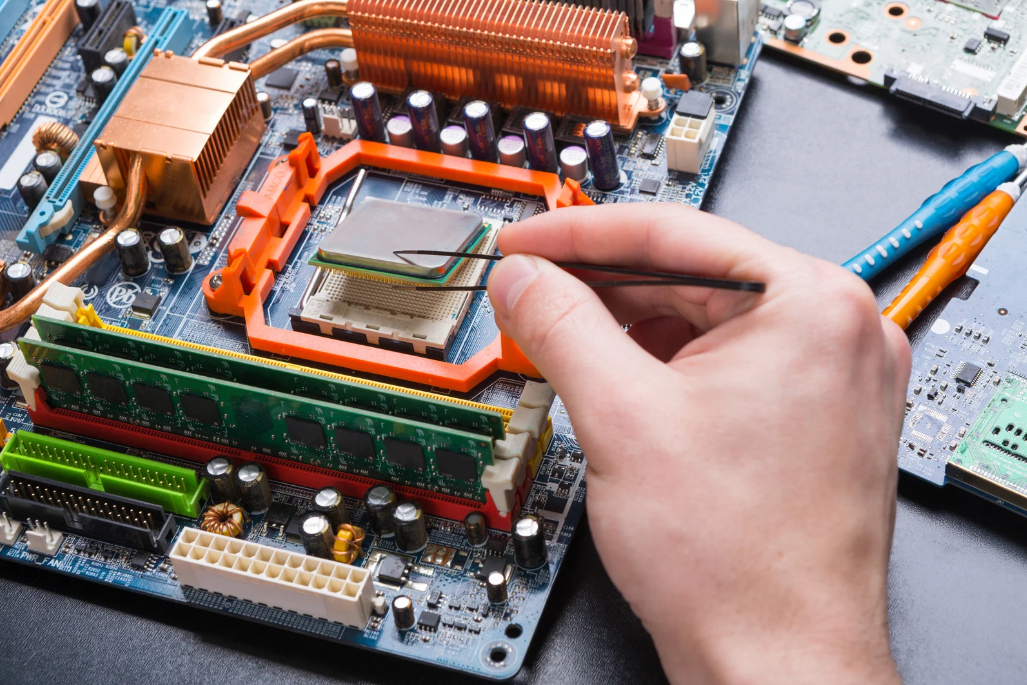Understanding the Piezoelectric Effect
So, piezo actuators… they’re all about this cool thing called the piezoelectric effect. Basically, certain materials, when you squeeze them or put them under mechanical stress, generate electricity. It’s like magic, but it’s science! This is the core principle behind how these actuators work.
Think of it like this:
- Apply pressure.
- Material gets stressed.
- Voltage appears.
It’s a pretty neat trick of nature that we can use to our advantage.

The Inverse Piezoelectric Effect in Action
Okay, so the piezoelectric effect is one thing, but the inverse piezoelectric effect is where the real action is. This is where you zap the material with electricity, and instead of making electricity, it moves. It expands or contracts, depending on the material and how you apply the voltage. This is how piezo actuators actually actuate – they turn electrical energy into tiny, precise movements.
It’s kind of mind-blowing when you think about it. You’re essentially telling a solid material to move just by applying electricity. The amount of movement is super small, but it’s incredibly precise and repeatable, which makes it useful for all sorts of things.
Achieving Precise Displacement
Getting that precise movement is the whole point. The amount the material moves is directly related to the voltage you apply. This means you can control the movement with incredible accuracy. We’re talking nanometers here! To get the displacement needed, the piezo materials are often stacked. The materials are also carefully chosen and manufactured to maximize the effect. Here’s a simplified view of how voltage affects displacement:
| Voltage (V) | Displacement (nm) |
| 10 | 2 |
| 50 | 10 |
| 100 | 20 |
It’s all about fine-tuning the electrical signal to get the exact movement you need. This level of control is what makes piezo actuators so special.
Key Advantages of Piezo Actuator Technology
Piezo actuators are becoming more common, and for good reason. They bring a lot to the table, especially when you need things done just right. Let’s look at some of the big wins you get with this tech.
Unparalleled Precision and Control
The standout feature of piezo actuators is their ability to move with incredible accuracy. We’re talking movements so small, you need special equipment to even see them. This level of control is a game-changer in fields where precision is everything. Think about surgery, or building tiny electronics – you need things to be spot on, and piezo actuators deliver.
Rapid Response Times for Dynamic Applications
Piezo actuators are quick. Really quick. They can react to changes almost instantly, which makes them perfect for situations where things are moving fast. This is super important in stuff like active vibration control, where you need to make adjustments in real-time to keep things stable. Regular motors just can’t keep up.
High Force Output in Compact Designs
One of the coolest things about piezo actuators is how much power they pack into a small space. They can generate a surprising amount of force, even though they’re often tiny. This is a huge advantage when you’re trying to build smaller, lighter devices without sacrificing performance. Imagine fitting a powerful motor into something the size of your thumb – that’s the kind of potential we’re talking about.
Piezo actuators are reliable and versatile. They are small, flexible, can be manufactured into any shape, and have no moving parts that require lubrication. Piezo actuators have very low energy consumption, high force generation and load capabilities, and can operate in vacuum and cryogenic environments. They have very fast response times and can be made to operate at high voltages.
Piezo Actuators in Medical Advancements

Piezo actuators are making a real difference in medicine. They’re not just some fancy tech; they’re helping doctors and researchers do things that were impossible before. Think smaller, more precise movements, and faster reactions – that’s what piezo actuators bring to the table. Their ability to provide controlled movement at a micro-scale is revolutionizing various medical applications.
Precision in Surgical Instruments
Imagine surgery where the cuts are incredibly precise, minimizing damage to surrounding tissue. That’s the promise of piezo actuators. They can control surgical tools with amazing accuracy, which is especially useful in delicate procedures like eye surgery or neurosurgery. It’s like having a super-steady hand, but even better because it’s consistent and reliable. This can lead to faster recovery times and better outcomes for patients.
Enhancing Diagnostic and Therapeutic Devices
From ultrasound to MRI machines, piezo actuators are improving how we diagnose and treat illnesses. In ultrasound, they help create clearer images. In therapeutic devices, they can deliver targeted treatments with greater precision. They are also used in haptic feedback systems, allowing doctors to “feel” tissues during minimally invasive procedures, which can improve accuracy and reduce the risk of complications.
Microdosing and Fluid Control
Getting the right dose of medication is super important, and piezo actuators are stepping up to make it more accurate. They can control the flow of fluids with incredible precision, which is essential for microdosing applications. This is especially useful in drug delivery systems, where even a tiny difference in dosage can have a big impact. Piezoelectric micro-pumps are also being used in implantable devices to deliver medication directly to the affected area, improving treatment effectiveness and reducing side effects.
Piezo actuators are enabling a new generation of medical devices that are smaller, more precise, and more effective. This technology is not just about making things smaller; it’s about improving patient care and outcomes. The future of medicine is looking brighter thanks to these tiny but powerful devices.
Transforming Industrial Automation with Piezo Actuators
Piezo actuators are making big changes in industrial automation. Their ability to make tiny, precise movements, react super fast, and pack a punch in a small size makes them perfect for all sorts of tasks. They’re not just a fancy upgrade; they’re changing how things are made and done in factories.
Accurate Positioning in Robotics
Robotics relies on precision, and piezo actuators deliver. They allow robots to move with incredible accuracy, which is important for tasks like assembling small parts or working in tight spaces. Think about a robot that needs to place tiny components on a circuit board. Piezo actuators make it possible to do this quickly and without errors. This leads to faster production times and fewer mistakes.
Optimizing Valve and Pump Control
Piezo actuators are also great for controlling valves and pumps. They can open and close valves very quickly and precisely, which is useful in many industrial processes. For example, in chemical plants, precise control of fluid flow is important for safety and efficiency. Piezo actuators can help maintain the right flow rates and pressures, leading to better control of the process.
Material Handling and Assembly
Material handling and assembly lines are becoming more efficient with piezo actuators. They can be used to move and position parts with great accuracy, which is important for assembling complex products. Imagine a factory that makes smartphones. Piezo actuators can help robots pick up and place the tiny components inside the phone, ensuring that everything is assembled correctly. This leads to faster production and fewer defects.
Piezo actuators are changing industrial automation by providing the precision, speed, and force needed for many tasks. They’re not just a small improvement; they’re helping factories become more efficient, accurate, and reliable. As technology continues to improve, we can expect to see even more uses for piezo actuators in industrial settings.
Aerospace and Defense Applications of Piezo Actuators

Piezo actuators are finding their way into some pretty cool aerospace and defense applications. Their precision and quick response times make them a good fit for systems where accuracy and speed are key. It’s not just about making things smaller; it’s about making them better.
Fuel Injection Systems for Enhanced Efficiency
Piezo actuators are being used in fuel injection systems to control the amount of fuel delivered to engines with greater accuracy. This leads to better fuel efficiency and reduced emissions, which is a big deal for both aircraft and military vehicles. Think about it: tiny adjustments making a huge difference in how far a plane can fly or how much fuel a tank burns.
Active Noise and Vibration Cancellation
Ever been on a plane and wished it was quieter? Piezo actuators can help with that. They’re used in active noise and vibration cancellation systems to reduce the amount of noise and vibration that reaches the passengers or sensitive equipment. The actuators generate vibrations that are opposite to the unwanted noise or vibration, effectively canceling it out. This makes for a more comfortable ride and protects sensitive electronics.
Optical Alignment in Advanced Systems
In aerospace and defense, there are a lot of advanced optical systems, like telescopes and targeting systems, that need to be aligned with extreme precision. Piezo actuators can be used to make tiny adjustments to the position of mirrors and lenses, ensuring that the system is perfectly aligned. This is important for getting clear images and accurate data. It’s like fine-tuning a camera lens, but on a much grander scale.
The use of piezo actuators in aerospace and defense is growing as engineers find new ways to take advantage of their unique properties. They offer a combination of precision, speed, and reliability that is hard to match with other technologies. As technology advances, expect to see even more innovative uses for piezo actuators in these fields.
Piezo Actuators in Scientific Instrumentation
Piezo actuators are super important in scientific instruments that need really precise movements. Think about things like microscopes that let you see atoms – those need to be super accurate! Piezo actuators make it possible.
Enabling Nanometer-Scale Microscopy
Piezo actuators are the backbone of modern microscopy techniques that allow us to see things at the nanometer scale. Without them, we wouldn’t be able to build things like Atomic Force Microscopes (AFMs) or Scanning Tunneling Microscopes (STMs). These microscopes use a tiny tip to scan a surface, and piezo actuators control the movement of that tip with incredible precision. It’s like trying to draw a picture with a pen that can move less than the width of an atom – pretty wild, right?
Precision in Spectroscopy and Optics
Spectroscopy and optics also rely on piezo actuators for fine adjustments. For example, in a spectrometer, you might need to precisely align mirrors or gratings to separate light into its different colors. Piezo actuators can do this with amazing accuracy. Here’s a simple example of how they might be used:
- Adjusting the angle of a mirror in a laser cavity.
- Controlling the position of a diffraction grating.
- Fine-tuning the focus of a lens.
Advanced Laboratory Automation
Piezo actuators are also making a big difference in laboratory automation. Instead of humans doing repetitive tasks, robots with piezo actuators can handle things like pipetting, sample positioning, and other delicate operations. This not only speeds up research but also reduces the chance of human error. It’s like having a super-precise robot assistant in the lab!
Piezo actuators are really changing the game in scientific research. They allow us to build instruments that are more precise, more reliable, and more efficient than ever before. This means we can explore the world at a smaller scale and make new discoveries that were impossible before.
Consumer Electronics and Everyday Piezo Actuators
Piezo actuators aren’t just for fancy scientific equipment or industrial robots; they’re quietly working in many of the gadgets we use every day. It’s kind of amazing when you think about it. They bring precision to things you might not even realize need it.
Autofocus Mechanisms in Cameras
Remember when focusing a camera meant twisting a lens until things looked sharp? Now, autofocus is so fast and accurate, it’s easy to take for granted. Piezo actuators are often the unsung heroes behind this, rapidly and precisely adjusting the lens position to achieve perfect focus. They’re especially useful in smartphones, where space is at a premium.
Vibration Reduction in Mobile Devices
Ever wonder how your phone manages to take decent photos or videos even when your hands are a bit shaky? Piezo actuators can be used in vibration reduction systems. They counteract small movements, leading to clearer images and smoother video recording. It’s a subtle but important feature, especially for those of us who aren’t exactly known for our steady hands.
Inkjet Printing and Dispensing
Inkjet printers rely on precise control over ink droplets to create images and text. Piezo actuators are used to eject ink from the print head with incredible accuracy. The speed and precision of these actuators are what allow inkjet printers to produce high-resolution prints quickly. It’s a pretty neat application when you consider how much detail goes into each printed page.
Piezo actuators are also found in some audio equipment, where they can be used to create tiny, high-frequency speakers. They’re not going to replace your home theater system, but they’re great for small devices where space is limited and sound quality is still important. It’s all about finding the right tool for the job, and piezo actuators often fit the bill perfectly in consumer electronics.
Wrapping Things Up: The Future of Piezo Actuators
So, we’ve gone over a lot about piezo actuators. They’re pretty cool, right? These little devices, working on a simple idea, are showing up in all sorts of places. From making sure your camera focuses just right to helping out in super precise medical tools, they’re doing a lot of important work. As technology keeps moving forward, you can bet we’ll see even more clever ways to use them. It’s clear that these actuators, with their ability to make tiny, exact movements, are going to be a big part of how things get done in the future.
Frequently Asked Questions
What exactly is a piezo actuator?
Piezo actuators are special devices that use a neat trick with certain materials. When you put electricity into these materials, they change shape just a tiny bit. This small change is super precise and can be used to move things very accurately.
Where can I find piezo actuators in everyday life?
They’re used in tons of places! Think about your smartphone camera’s autofocus, the tiny nozzles in an inkjet printer, or even in advanced medical tools for very delicate surgeries. They’re also in things like fuel injectors in cars and systems that reduce noise and vibration in airplanes.
What makes piezo actuators so special?
Piezo actuators are amazing because they can move things with incredible accuracy, sometimes down to a few atoms! They also respond super fast, almost instantly, and can create a lot of force even though they’re often small. Plus, they last a long time.
How do piezo actuators actually work?
The main idea is called the ‘piezoelectric effect.’ Imagine squeezing a special crystal, and it creates a tiny bit of electricity. That’s one part. The other part, which piezo actuators use, is the opposite: when you send electricity into that crystal, it changes its size or shape. This allows for very controlled, small movements.
Are there any downsides to using piezo actuators?
While they are super precise, piezo actuators usually only move a very small distance. Also, they often need a higher voltage to work, and sometimes they need extra parts to make them move bigger things or deal with heavy loads.
How do piezo actuators help in advanced technology and science?
They’re a big deal in medical devices for things like super precise surgery tools and systems that give out tiny, exact amounts of medicine. In factories, they help robots move with extreme accuracy and control valves and pumps very precisely. They’re also key in scientific tools that look at things at a super tiny level, like atoms.



